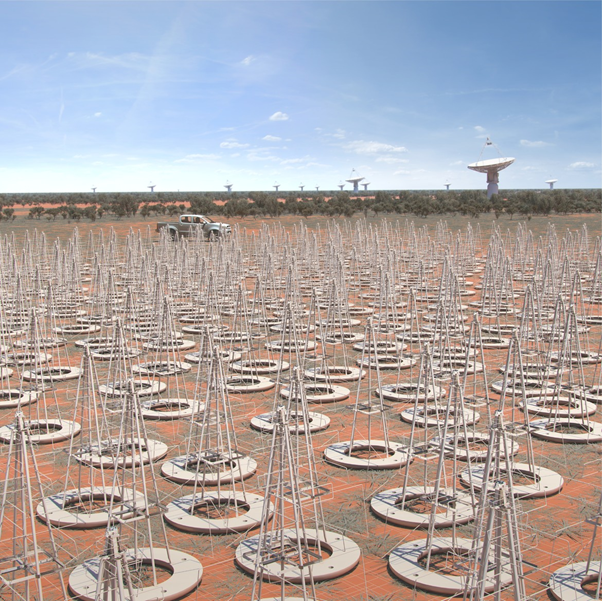World’s largest telescope finds home in Australia

Australia is now set to be home to the world’s largest radio telescope, allowing astronomers to gaze at the galaxy in greater detail, 135 times faster than any existing telescope.
Ratification of the Square Kilometre Array (SKA) Observatory Convention which will see Western Australia host 130,000 antennas, each at 2 metres in height at the CSIRO Murchison Radio-astronomy Observatory, spread out over 65 kilometres in remote WA, alongside 200 dishes located in South African to make the telescope the world’s largest.
The project will also provide a significant economic boost to the Western Australian economy.
According to Professor Peter Quinn, Executive Director of the International Centre for Radio Astronomy Research (ICRAR) the abundance of isolation in the Western Australian desert persuaded the international community to build a major part of the SKA in Australia.
Australia is now the fourth country worldwide to ratify the SKA Observatory Convention and is the host of SKA - Low, the world’s most sensitive low-frequency radio telescope.
Quinn said that the ratification is comparable to the opportunities afforded by the Large Hadron Collider (LHC), the world’s largest and most powerful particle accelerator.
“This represents not only a significant and long-term investment in Australian jobs and capabilities but also an opportunity for Australian researchers, students and industries to be involved in a big science project that will require significant innovations such as the LHC,” said Quinn.
“Big science projects also form an ideal platform to join science and industry into an innovative ecosystem. The focus of a project on producing a machine to do science that needs large-scale off-the-shelf investment, as well as innovation, produces a connectivity and bonding between the aims of science and industry”.
Western Australia Minister for Science, Dave Kelly believes that Australia hosting the SKA’s low-frequency aperture array antennas will help further cement WA’s role in co-hosting one of the biggest science projects in human history.
“Australia’s ratification of the convention enhances Western Australia’s position as a global hub for radio astronomy, and will offer significant economic and job-creating opportunities for the state,” said Kelly.
“Just over a decade ago we had a handful of astronomers working in WA and now there are around 135 astronomers, 25 engineers and 25 data scientists working in WA on the SKA project in astronomical research, with more to come”.
Minister for Industry, Science and Technology Karen Andrews said that the project is expected to generate hundreds of millions over dollars in economic activity across the next decade.
“Not only does our project further cement Australia’s reputation for science and research and boost our international standing in radio astronomy, but it also has the potential to create 200 construction jobs in regional Western Australia and Perth and a further 100 permanent positions,” said Andrews.
The SKA will also help boost Australia’s advanced manufacturing centre and encourage local business partners to collaborate with international counterparts to design and manufacture high tech, high-quality components for the telescope.
“Additionally, Australia will play a leading role in developing new digital capabilities to process the unprecedented volumes of data produced by the SKA, with the potential for these processes to support other manufacturers,” said Andrews.
“Australians should be proud that our country will be a host of the world’s largest scientific instrument, which will help shape our understanding of the beginning of the universe”.
According to the SKA Organisation, the ultimate goal will be to expand the 130,000 SKA antennas to up to a million.
The project is expected to begin initial construction mid-2021.










